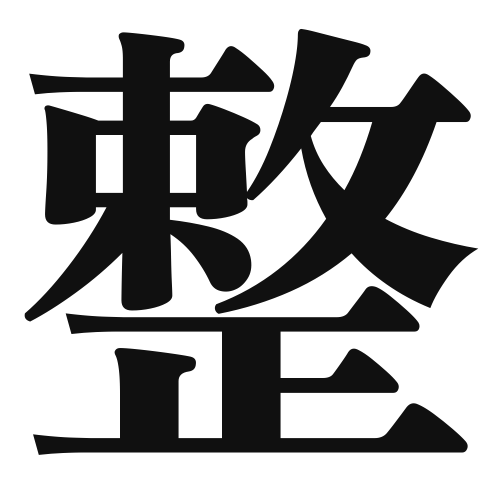1. Overview of Meaning
The kanji “整” (pronounced “sei” or “tō”) generally means “to arrange,” “to put in order,” or “to organize.” It conveys the idea of tidiness and systematic organization.
2. Formation and Radical
Formation of the Kanji: The kanji “整” is a compound character (会意文字) that combines elements to convey its meaning. It consists of the radical “正” (meaning “correct” or “right”) and “青” (which can represent “blue” or “green,” but here contributes to the overall meaning of order and clarity).
Radical: The radical of “整” is “正,” which is often associated with correctness and order.
3. Examples of Usage
Common Words and Phrases: Some frequently used words that include “整” are:
- 整備 (せいび, seibi) – maintenance
- 整理 (せいり, seiri) – sorting or organizing
- 整然 (せいぜん, seizen) – orderly
Example Sentences in Daily Conversation:
- 部屋を整えました。 (へやをととのえました。) – I arranged the room.
- 資料を整理する必要があります。 (しりょうをせいりするひつようがあります。) – I need to organize the documents.
4. Synonyms and Antonyms
Similar Kanji: A similar kanji is “整える” (ととのえる, totonoeru), which means “to arrange” or “to prepare.” The difference lies in the nuance; “整える” emphasizes the act of making something orderly, while “整” can refer to the state of being organized.
Antonyms: An antonym of “整” is “乱” (らん, ran), which means “disorder” or “chaos.” This highlights the contrast between order and disorder.
5. Cultural and Historical Background
Relation to Japanese Culture: The concept of “整” is significant in Japanese culture, where organization and harmony are highly valued. It reflects the importance of maintaining order in both personal and communal spaces.
Proverbs and Idioms: One relevant proverb is “整然とした生活” (せいぜんとしたせいかつ, seizen to shita seikatsu), which means “an orderly life.” This emphasizes the cultural belief in the benefits of living in an organized manner.
